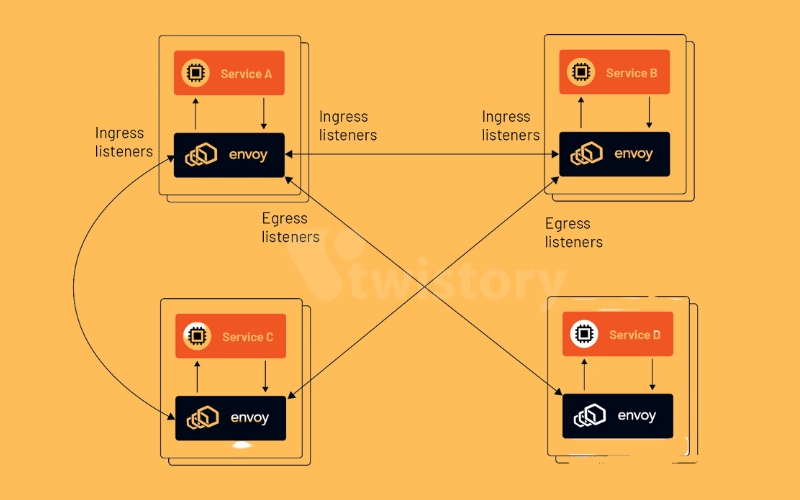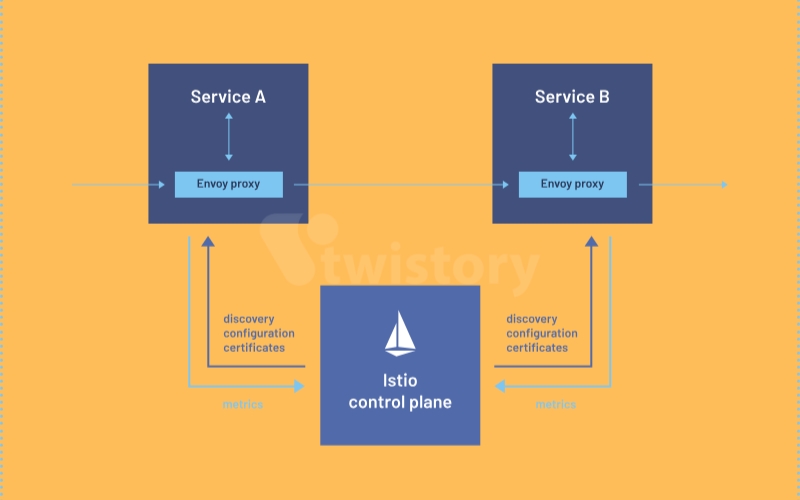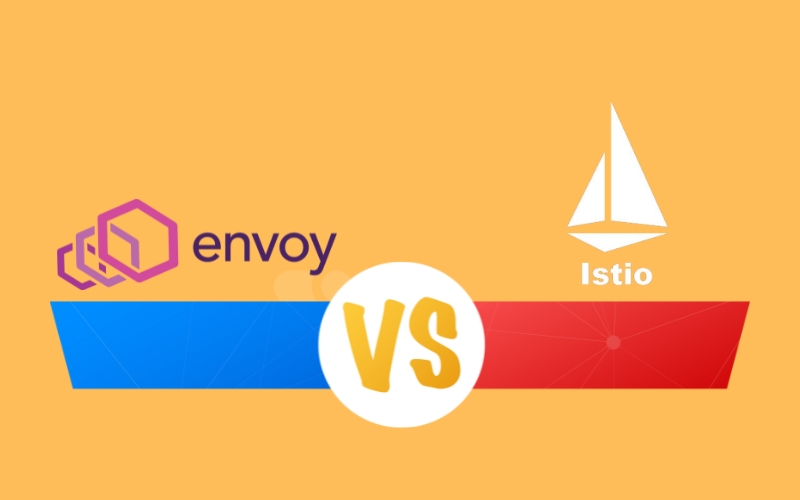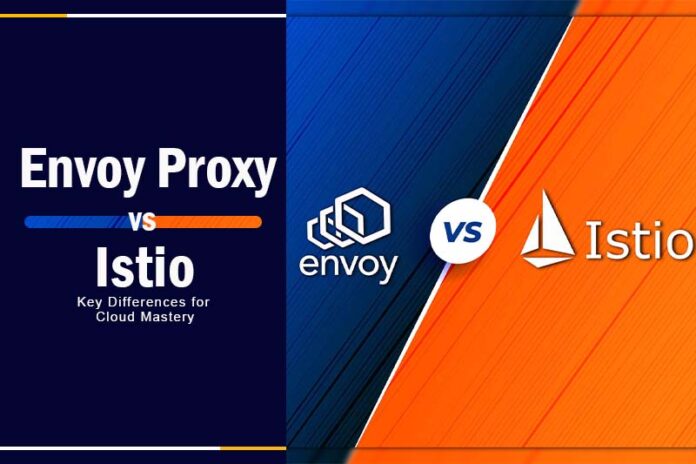Confused about the optimal choice for your cloud-native environment: Envoy Proxy or Istio? Wondering which solution will best cater to your microservices management and security needs? Dive into our detailed comparison of “Envoy Proxy vs Istio” to shed light on their unique features and functionalities. By the end of this read, you’ll be equipped with the insights needed to make an informed decision for your modern architecture.
What Is Envoy Proxy?
In the modern tech landscape, as companies embrace microservices, they often integrate a level 7 (application layer) proxy into their architectural framework. In expansive microservice settings, these L7 proxies play a crucial role, enhancing observability, ensuring resilience, and streamlining routing. What’s noteworthy is that when external services tap into these proxies, they aren’t immediately aware they’re connecting to an extensive network of microservices.

Enter the Envoy Proxy. This open-source tool stands out as a robust, efficient, and compact edge and service proxy. Its functions resonate with popular software load balancers such as NGINX and HAProxy. Originally birthed by Lyft, the Envoy Proxy has grown exponentially, boasting a thriving community of contributors. The Cloud Native Computing Foundation (CNCF) has also recognized its value, welcoming it and bestowing upon it a “Graduated” maturity status.
>> See more: What Is Envoy Proxy? The Secret to Microservices Success
What is Istio?
Istio is an open-source service mesh, specially designed to assist organizations in operating distributed applications based on microservices, regardless of their location. So, why should one consider Istio? The key advantage lies in Istio’s ability to seamlessly secure, link, and oversee microservices, which in turn empowers enterprises to update their apps at a quicker and safer pace.

Istio takes the helm in managing the flow of traffic between different services, implementing access protocols, and compiling telemetry information. Impressively, all these functionalities are achieved without the need to modify the application’s code. By overlaying transparently onto pre-existing distributed applications, Istio greatly simplifies deployment complexities.
Envoy vs Istio: What are the differences?
Both Envoy and Istio stand out as go-to technologies in the realm of microservices management and security within cloud-centric domains. However, they serve distinct roles: Envoy shines as an efficient proxy, whereas Istio emerges as an all-encompassing service mesh platform. Let’s dive into their unique features and differences:

Scope and Functionality
At its core, Envoy is an open-source, high-performance edge and service proxy tailored for contemporary system designs. It zeroes in on directing inter-service network traffic, boasting functionalities such as load balancing, routing, advanced traffic administration, and enhanced observability. You’ll find Envoy playing the role of a data plane component, compatible with standalone usage or as a piece in broader service mesh architectures.
Istio, in contrast, is a holistic service mesh solution that adopts Envoy as its default sidecar proxy. Istio unfolds a broad spectrum of tools for traffic coordination, safeguarding measures, policy imposition, and keen observability. It operates as the guiding control plane, overseeing the settings and conduct of the Envoy proxies paired with services.
Service Mesh Features
Istio expands the horizon with features that surpass the standalone offerings of Envoy. Its suite encompasses smart routing, adept traffic partitioning, canary rollouts, fault induction, circuit disrupters, and refined service-level authentication and authorization. Furthermore, its observability is enhanced through distributed tracking, analytics, and logging. Such a repertoire empowers developers to weave intricate traffic and security schemas into their microservices blueprint.
While Envoy stands robust as a proxy, its service mesh-centered offerings don’t quite match Istio’s breadth.
Architecture and Integration
Conceived as an independent entity, Envoy can weave into diverse app frameworks. It’s versatile in deployment contexts and operates harmoniously, service mesh or no service mesh. Its language-neutrality ensures compatibility with apps scripted in assorted coding dialects.
Conversely, Istio is architected atop Envoy, delivering an elevated abstraction layer for inter-service dialogues. Predominantly, Istio entwines with Kubernetes, marking its preference for Kubernetes-centric ecosystems. By harnessing Envoy’s prowess, Istio constructs a control panel to steer and tailor the Envoy proxies.
Complexity and Learning Curve
Envoy, as a self-sufficient proxy, offers a more straightforward adoption journey. Istio, given its expansive features and control modules, commands a steeper learning gradient. Envoy’s configurations are flexible, be it via its proprietary files or APIs.
Istio, however, demands familiarity with custom resource definitions (CRDs) and specialized components, like gateways and virtual services.
Summary
To encapsulate, both Envoy and Istio elevate the paradigm of contemporary microservices communication. While Envoy manifests as an adept edge and service proxy, Istio emerges as a holistic service mesh paradigm, with Envoy as its foundation.
In wrapping up, the distinctions between “Envoy Proxy vs Istio” are crucial in shaping the future of cloud-native landscapes. Both tools bring their own flair and advantages to modern architectures, but understanding their nuances can drive success in your microservices strategy.
For more in-depth insights and expert takes on technology, don’t hesitate to explore more blogs from Twistory. Our mission is to illuminate your tech journey, one story at a time.


